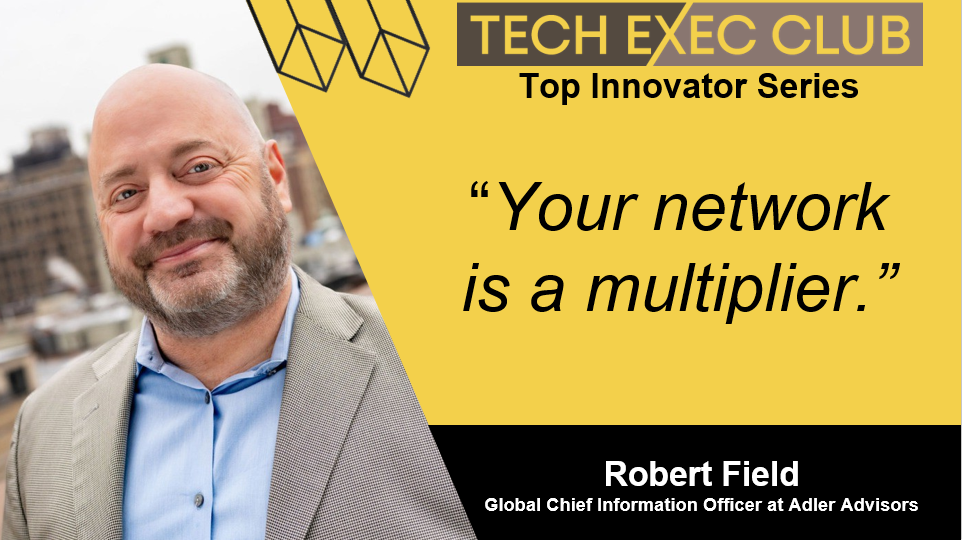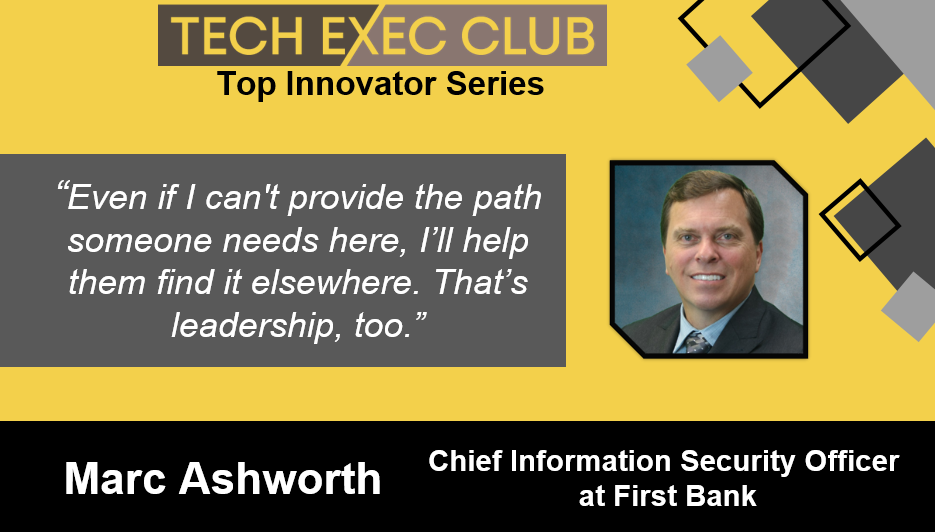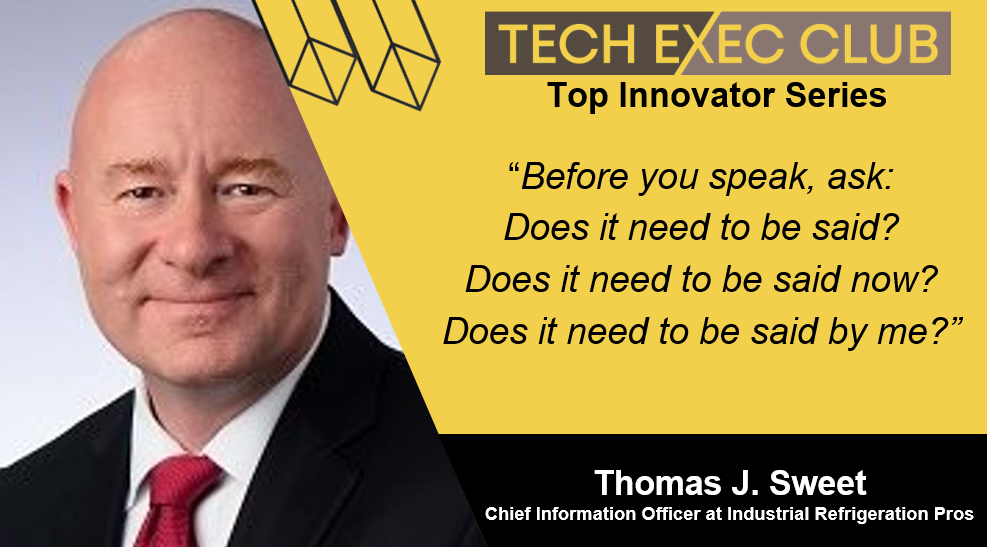It’s not every day that you meet a leader who thrives in chaos—who seeks out the messy, the misaligned, the moments when a company is at a crossroads. However, for Conor Sherman, Chief Information Security Officer at Updater, this is where the real work—and the real magic—begins.
In a candid and wide-ranging conversation with Josef Martins on the Top Innovator Series, Sherman opens up about his journey from help desk technician to transformative tech executive and why he’s drawn not to steady-state companies but those hungry for reinvention.
Sherman has led cybersecurity and technology teams through make-or-break moments at organizations like CLEAR and Apollo Global Management, and now at Updater—where the stakes include helping over 11 million households move more efficiently and supporting the relocation of hundreds of thousands of U.S. service members each year.
But what truly distinguishes Sherman isn’t just his technical pedigree—it’s his human-first, culture-forward leadership style. Whether rolling out intent-based leadership workshops, rewriting the operating frameworks of leadership teams, or realigning entire departments based on personality assessments, his approach is deliberate, structured, and deeply empathetic.
Throughout the interview, Conor reflects on the frameworks that shaped him, the mentors who modeled excellence, and the inner work required to lead with clarity in an accelerating AI age. With refreshing honesty, he also shares what he’s still working on—how he’s learning to prioritize the strengths of others over his instincts to lead from the front.
This is more than a conversation about innovation—it’s a masterclass in modern Leadership.
Leading Through Transformation – The Turnaround Mindset
For most executives, stepping into a chaotic, underperforming organization is a professional nightmare. For Conor Sherman, it’s a calling.
With more than 15 years of experience in tech executive roles, Sherman has developed a reputation for leading companies through periods of intense change. His time at CLEAR—a company familiar to frequent flyers—was particularly transformative. “That’s really when I started to sink my teeth into turnarounds,” he shares. Since then, his career has followed a clear pattern: gravitating toward organizations that need something materially different done.
This self-awareness didn’t arrive overnight. “It took me going through working with a handful of companies to come back and ask, ‘What are the patterns?'” Sherman reflects. Over time, he realized he wasn’t a leader who wanted to maintain the status quo. He thrived when he could enter a messy room, bring order, and rally people in a unified direction.
What separates Sherman’s approach is his understanding of organizational context. Not every company needs a turnaround artist, he notes. Some are scaling rapidly; others are fine-tuning already effective systems. “The toolsets a turnaround leader might have wouldn’t necessarily apply to a company doing well in a steady state.” The wisdom lies in knowing the difference and where you, as a leader, can do your best work.
Leadership Self-Awareness and Identity
For Sherman, the journey to becoming an effective leader began with understanding himself.
“I’ve always been happy to jump into a mess, organize that mess, and get people going in a direction,” he says. But this wasn’t just a personality quirk—it was something he understood and named through tools like the DISC personality assessment. “I thought I was this unique snowflake,” he laughs. “Nope—it turns out most people fall into a bucket.”
This humility and introspection have been key to his evolution. Rather than mimicking what others were doing, Sherman took a more tailored route, choosing whether to be a broad generalist or a deep specialist. “I landed in the camp of adaptability. I wanted to keep myself as malleable as possible.”
This self-awareness informs how Sherman builds his teams and leads his people. He believes that outstanding Leadership isn’t about control—it’s about knowing who you are so you can recognize and cultivate the greatness in others.
Intent-Based Leadership and Building a Leadership Operating System
Sherman doesn’t just lead—he builds leadership infrastructure. One of his most effective tools is intent-based Leadership, a framework introduced in L. David Marquet’s book Turn the Ship Around.
“This particular framework resonated with me,” he says. “Because what it allowed me to do was bring a language and a set of thinking to the rest of my team.” But he doesn’t stop recommending the book—he brings it to life. Sherman breaks the book down during offsite sessions into workshops, interactive experiences, and culture-building activities.
He treats culture not as an abstract ideal but as something you build deliberately. He co-created an operating framework with his leadership team that outlines their shared values and principles. “How do we operate? What’s important to us? What’s not?” These questions don’t just live in strategy decks—they become everyday touchstones.
This structured yet human approach helps his team move faster and more clearly, even when the challenges are complex or chaotic. As Sherman puts it, “You can have the world’s best gym plan, but if you don’t show up and lift the weights, it’s not going to happen.”
Creating High-Trust Environments That Prioritize Individual Strengths
At the heart of Sherman’s Leadership is a belief that execution follows the environment—and not the other way around. “Fix the environment; don’t try to fix your people,” he says.
This belief shapes how he builds his teams. Whether it’s through DISC or newer tools like Sparketype—a framework for understanding how people show up professionally—Sherman prioritizes understanding what drives and energizes his people. “You’ll be surprised by the answers you get from your team,” he notes.
His goal is to match the right person to the right project, not based on title, but on strengths and natural preferences. For example, he admits that he’s not the person who should be doing in-depth spreadsheet analysis—but he knows who on his team loves that kind of work. “If I see a class of problem that requires deep analysis, I ask myself, ‘Who on my team will thrive with this?’ Then I give them the space to own it.”
In a tech culture often obsessed with “top performers,” Sherman is quietly revolutionary. He looks beyond output and focuses on fit—ensuring everyone has a chance to shine, not just the loudest voice in the room.
Redefining the Role of the CISO – From Fixer to Risk Translator
In the final stretch of the interview, Sherman offers an insight that could reshape how companies understand cybersecurity leadership.
Too often, CISOs see themselves as the last line of defense—the ones who must “fix” the risk. But Sherman argues for a different framing: “The job of the CISO is to be a credible witness to the risk. “It’s our job to bring risks and options to the rest of the business, then let them prioritize.”
This shift from fixer to facilitator is subtle but vital. It prevents burnout, improves executive collaboration, and ensures the right conversations happen in the right rooms. “The failure mode,” Sherman warns, “is when we try to skip the education and consensus-building and go straight to the fixing.”
Sherman sees his role as helping the business make informed decisions, not trying to solve every problem himself. In that role, he becomes more than a security leader—he becomes a strategist, a communicator, and a trusted advisor at the executive table.
If you’re a leader looking to evolve, grow your team, and guide your organization through transformation, here are actionable takeaways from Conor Sherman’s leadership philosophy that you can apply today:
1. Know Your Context — Diagnose the Company’s Life Stage: Don’t apply turnaround strategies to a scaling company—or vice versa. Match your leadership tools to the environment.
2. Invest in Self-Awareness as a Leadership Superpower: Use frameworks like DISC or Sparketype to understand your personality and how it affects your leadership style. Ask yourself: Am I a specialist or a generalist? Do I adapt or go deep?
3. Create and Codify a Leadership Operating System: Read Turn the Ship Around and explore Intent-Based Leadership—host leadership offsites to co-create an operating manual with your team. Build in rituals and language that reinforce the leadership culture you want.
4. Prioritize the Environment, Not Just Execution: Stop trying to “fix” your people. Instead, they need to fix the environment in which they work. Use assessments to understand your team’s unique strengths and assign work accordingly. Make space for introverts, deep thinkers, and non-obvious contributors.
5. Rethink the Role of Risk Professionals: As a CISO or security leader, aim to be a credible witness to risk, not the sole fixer. Build consensus and educate the executive team instead of rushing straight into remediation. This shift in mindset can reduce burnout and increase long-term impact.
6. Balance Speed with Depth in the Age of AI: Embrace new workflows and tools like Gemini to accelerate information gathering. But beware of becoming a “culture of skimmers”—value reflection, clarity, and critical thinking. Create team norms that prioritize peace, not just productivity.
Conor Sherman isn’t just building safer systems and better teams.
From the outside, his résumé reads like a who’s who of cybersecurity leadership: roles at Apollo Global and CLEAR and now as CISO of Updater, a company tasked with making moving easier for millions of Americans. But behind the technical expertise is something rarer—a leader who brings humility, intentionality, and humanity to every decision.
Sherman’s ability to navigate complex, fast-moving environments while prioritizing culture, reflection, and trust sets him apart. He doesn’t chase trends—he studies the terrain, listens deeply, and builds lasting frameworks.
His Leadership isn’t loud—it’s clear. That clarity has allowed him to transform organizations and cultivate leaders within them.
As the world continues to accelerate—with AI transforming how we work and cybersecurity threats evolving faster than ever—leaders like Sherman offer a model for adapting: with eyes wide open, frameworks in hand, and people always at the center.
Want to hear Conor Sherman’s insights firsthand? Watch the full, live podcast interview [click here]





